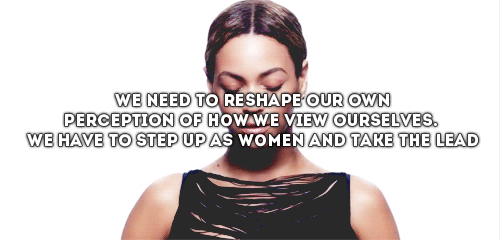- Pink used to be considered a "boy color" and blue a "girl color".
- High heels were designed and created for men, being deemed as "masculine" for a century.
- Lace was considered a "manly" fabric for the upper-class.
- Cheerleading began as a Boys' Club, because it was too "manly" for girls.
Sadia: As a brown girl growing up in a what can be very constrictive culture, it has made me feel suffocated. I sometimes feel like I am trapped in a box that is defined by patriarchy which decides what my role and purpose is as a female. The idea of men and women having specific roles in daily life is seen everyday in outward sexism, but is especially highlighted when I speak about ambition and goals for the future. More times than I can count, I have been told that my ultimate goal in life should be to marry a nice brown guy and have kids. There’s nothing wrong with being married or having a family, but being told that from the age of 10 -- which is as early as I can remember -- makes me feel as though I have been raised to be married. I have been molded to believe that my needs and wants should not take precedent over my future families, and that my ultimate purpose in life is to be a caretaker. However, I have noticed that this idea of marriage and home life is not sewn into boys my age. They are instead told to study hard in school, and follow the typical Indian stereotype of becoming an engineer or get a degree in IT. Trapping young minds in the stifling constraints of outdated culture serves nobody. This culture, which is (slowly) progressing with the millennial generation, has many boundaries to break and many uncomfortable conversations to be had with parents who will come to realize that their daughters are not born to be wives and provide them with grandchildren. Gender roles in all cultures, especially for women, have been used as weapons of control against females who have the brains and willpower to be just as great as men. It is the fear of change and progressiveness which prevents a society from practicing equality amongst men and women. It’s up to the men of this generation to reject conventional roles, as women work to break glass ceilings and rise above what holds them down.





